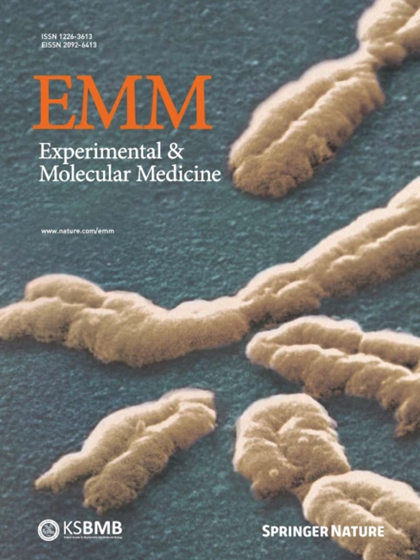VGF and the VGF-derived peptide AQEE30 stimulate osteoblastic bone formation through the C3a receptor
IF 9.5
2区 医学
Q1 BIOCHEMISTRY & MOLECULAR BIOLOGY
引用次数: 0
Abstract
New therapeutic targets, especially those that stimulate bone formation in cortical bone, are needed to overcome the limitations of current antiosteoporotic drugs. We previously demonstrated that factors secreted from megakaryocytes (MKs) promote bone formation. Here we conducted a proteomic analysis to identify a novel bone-forming factor from MK secretions. We revealed that Vgf, a nerve growth factor-responsive gene, and its derived active peptide AQEE30 in MK-conditioned medium play important roles in osteoblast proliferation and in vitro bone formation. In both Vgf-deficient male and female mice, the cortical bone mass was significantly decreased due to reductions in osteoblast number and bone formation activity. AQEE30 stimulated intracellular cyclic adenosine monophosphate (cAMP) levels and protein kinase A (PKA) activity in osteoblasts, whereas an adenylyl cyclase inhibitor blocked AQEE30-stimulated osteoblast proliferation and in vitro bone formation. Complement C3a receptor-1 (C3AR1) was expressed and interacted with AQEE30 in osteoblasts, and C3AR1 inhibition blocked all AQEE30-induced changes, including stimulated proliferation, bone formation and cAMP production, in osteoblasts. Injecting mini-PEGylated AQEE30 into calvaria increased the number of osteocalcin-positive cells and new bone formation. In conclusion, this study reveals a novel role of VGF in bone formation, particularly in cortical bone, and shows that AQEE30, a VGF-derived peptide, mediates this role by activating cAMP–PKA signaling via the C3AR1 receptor in osteoblasts. Osteoporosis is a common bone disease that weakens bones and increases fracture risk. Current treatments have limitations, especially in preventing nonvertebral fractures. Researchers focused on a protein called VGF, which is known for its role in the brain but not in bone health. The study used mice and cell cultures to investigate VGF’s effects on bones. They found that VGF and its peptide AQEE30 promote bone formation by stimulating osteoblasts. They used mass spectrometry to discover that VGF is important for bone health. Mice lacking VGF had weaker bones, especially in the cortical (outer) layer. The study showed that AQEE30 works by increasing cAMP levels, a molecule that helps cells communicate and grow. This discovery suggests that targeting VGF and AQEE30 could lead to new treatments for osteoporosis. This summary was initially drafted using artificial intelligence, then revised and fact-checked by the author.

VGF及其衍生肽AQEE30通过C3a受体刺激成骨细胞骨形成。
需要新的治疗靶点,特别是那些刺激皮质骨形成的靶点,以克服当前抗骨质疏松药物的局限性。我们之前证明了巨核细胞(MKs)分泌的因子促进骨形成。在这里,我们进行了蛋白质组学分析,从MK分泌物中鉴定出一种新的骨形成因子。我们发现神经生长因子反应基因Vgf及其衍生活性肽AQEE30在mk条件培养基中对成骨细胞增殖和体外骨形成起重要作用。在vgf缺乏的雄性和雌性小鼠中,由于成骨细胞数量和骨形成活性的减少,皮质骨量明显减少。AQEE30刺激成骨细胞内环磷酸腺苷(cAMP)水平和蛋白激酶A (PKA)活性,而腺苷酸环化酶抑制剂阻断AQEE30刺激的成骨细胞增殖和体外骨形成。补体C3a受体-1 (C3AR1)在成骨细胞中表达并与AQEE30相互作用,C3AR1抑制可阻断AQEE30诱导的成骨细胞增殖、骨形成和cAMP生成等变化。将微聚乙二醇化的AQEE30注射入颅骨后,骨钙素阳性细胞数量和新骨形成增加。总之,本研究揭示了VGF在骨形成中的新作用,特别是在皮质骨中,并表明VGF衍生肽AQEE30通过在成骨细胞中通过C3AR1受体激活cAMP-PKA信号来介导这一作用。
本文章由计算机程序翻译,如有差异,请以英文原文为准。
求助全文
约1分钟内获得全文
求助全文
来源期刊

Experimental and Molecular Medicine
医学-生化与分子生物学
CiteScore
19.50
自引率
0.80%
发文量
166
审稿时长
3 months
期刊介绍:
Experimental & Molecular Medicine (EMM) stands as Korea's pioneering biochemistry journal, established in 1964 and rejuvenated in 1996 as an Open Access, fully peer-reviewed international journal. Dedicated to advancing translational research and showcasing recent breakthroughs in the biomedical realm, EMM invites submissions encompassing genetic, molecular, and cellular studies of human physiology and diseases. Emphasizing the correlation between experimental and translational research and enhanced clinical benefits, the journal actively encourages contributions employing specific molecular tools. Welcoming studies that bridge basic discoveries with clinical relevance, alongside articles demonstrating clear in vivo significance and novelty, Experimental & Molecular Medicine proudly serves as an open-access, online-only repository of cutting-edge medical research.
 求助内容:
求助内容: 应助结果提醒方式:
应助结果提醒方式:


